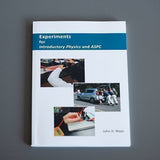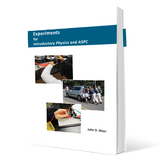- Description
- Specifications
- Contributors
-
** Note: This book is produced by print-on-demand service and may take 2-4 weeks to ship.
This book contains the teacher's instructions for lab experiments for both Introductory Physics and Accelerated Studies in Physics and Chemistry (ASPC) science courses. Each experiment includes learning objectives, a materials list, a statement of the purpose of the experiment, an overview, pre-lab discussion points, teacher’s experiment protocols, any safety precautions, and discussion of the use of any special apparatus. For some experiments calling for expensive equipment, alternative methods are suggested with less costly equipment.There is a total of six lab experiments in the book: five apply to both texts, and ASPC has one additional.
With the purchase of this book, PDF pages of the Student Instructions will be added My Library!
Experiments are an opportunity to learn proper laboratory skills and methods which will be needed in college and possible career. They serve to illustrate concepts learned separately in the classroom. They introduce students to laboratory apparatus. They also stimulate students and enhance the course experience with an interesting tactile activity.
High School lab experiments put students in the mode of the scientist and demonstrate how scientific investigation works. They have the power to reveal to students the importance of accuracy, precision, and attention to detail like few other activities in life.
The contents of this book are a subset of our book Favorite Experiments in Physics and Physical Science, a more comprehensive resource for high school science educators.
Paperback
ISBN: 9780996677141
Pages: 124
Dimensions: 6.75in x 9.62in
-
John D. Mays, Author

After receiving his BS in Electrical Engineering from Texas A&M University, John D. Mays worked for 14 years as an electrical engineering and engineering manager in the areas of electrical, control, and telecommunications systems. Drawn toward the field of education, John acquired an MEd in Secondary Education from the University of Houston in 1989, and subsequently completed 36 hours of graduate study in Physics at Texas A&M. Shortly after joining the faculty at Regents School of Austin in 1999, John began work on an MLA at St. Edward's University, which he completed in 2003. John served as Math-Science Department Chair at Regents School for nine years and as Director of the Laser Optics Lab for 10 years. He founded Novare Science & Math in 2009 and is the author of numerous science texts and teacher resources. He now works full time as Director of Science Curriculum for Classical Academic Press.






